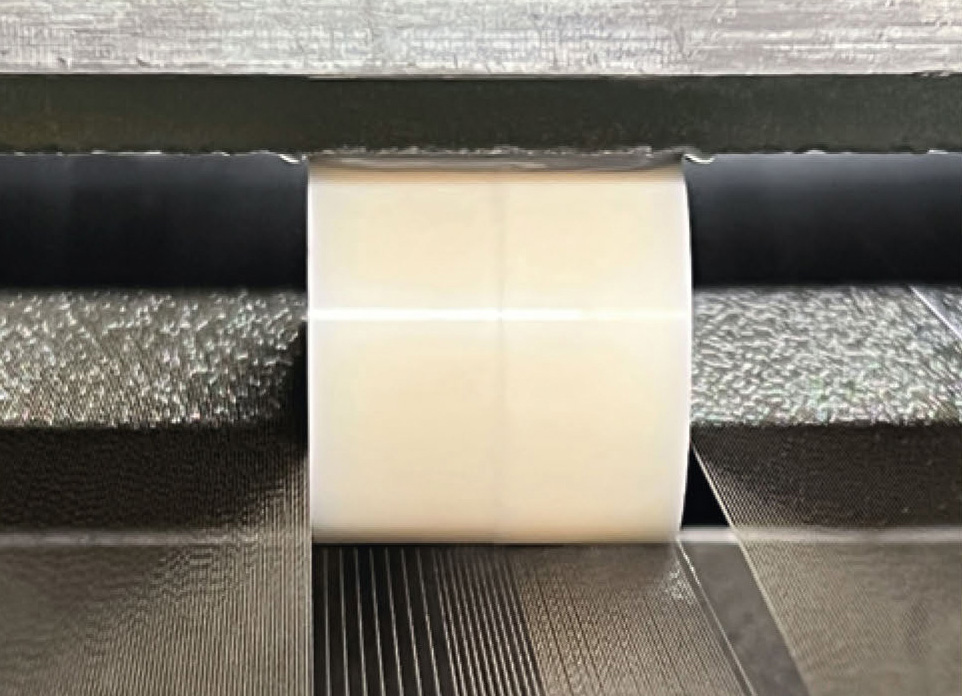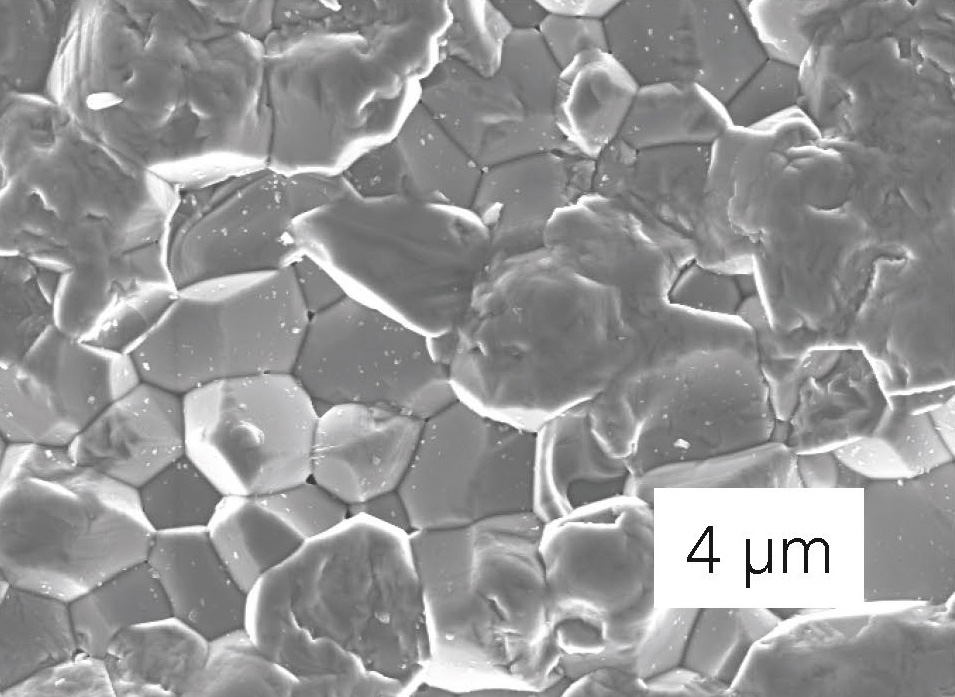
Efficient multi-wire sawing process for high-performance oxide ceramic substrates
Current research




Multi-wire sawing is a common cutting process used in silicon wafer production, which produces hundreds to several thousands of wafers from a blank in a single sawing run. A distinction is made between diamond wire sawing, where abrasive grains are bound in the wire, and slurry wire sawing, where an abrasive grain suspension is applied to a wire field. The workpiece is pressed against this moving wire field, causing material to be removed simultanously in multiple sawing channels.
As part of the project “SliCer”, fine-grained high-performance ceramics were processed using the slurry wire sawing method. Together with PV Crystalox, Fraunhofer IKTS is investigating the sawing behavior of Al2O3, MgAl2O4 and ZrO2 ceramics in order to produce particularly thin discs and rings for electronics, optics and measurement technology with high precision and efficiency. Previous work [1] has produced initial results concerning the correlation between sawing parameters and the resulting component properties. Based on this work, geometry and residual stresses were additionally characterized extensively in the “SliCer” project. Furthermore, the project partners looked at various measures intended to improve geometrical accuracy: they varied the slurry temperature and wire speed, used different fixation materials and adapted feed rates across the component cross-section. Using laser scanning images, the geometry of several adjacent slices was fully recorded and correlated with the sawing process parameters (Figure 4). Across all tests, the greatest challenge was encountered around the sawing-in and sawing-out area when trying to obtain components of equal thickness and flatness. The intrinsic hardness and the structural condition (grain size, proportion of pores) of the processed material have a significant influence on the material removal mechanisms. The deflection of the wire field serves as a measure of sawing resistance and sawing capability.
Fine-grained Al2O3 ceramics experience a wire field deflection of 4 to 8 mm in the center of the component at a feed rate in the range of 10 μm/min. MgAl2O4, on the other hand, hardly shows any deflection even at double the feed rate. The project results show that, when compared with the conventional manufacturing route, slurry wire sawing of high-performance ceramics could provide savings in terms of machinery, personnel and material, and it has the potential to produce disks in large quantities with a thickness of less than 100 μm.
Literature
[1] Schmidtner; L., Multi-Wire Sawing of translucent Alumina Ceramics, 2020.
Supported by


